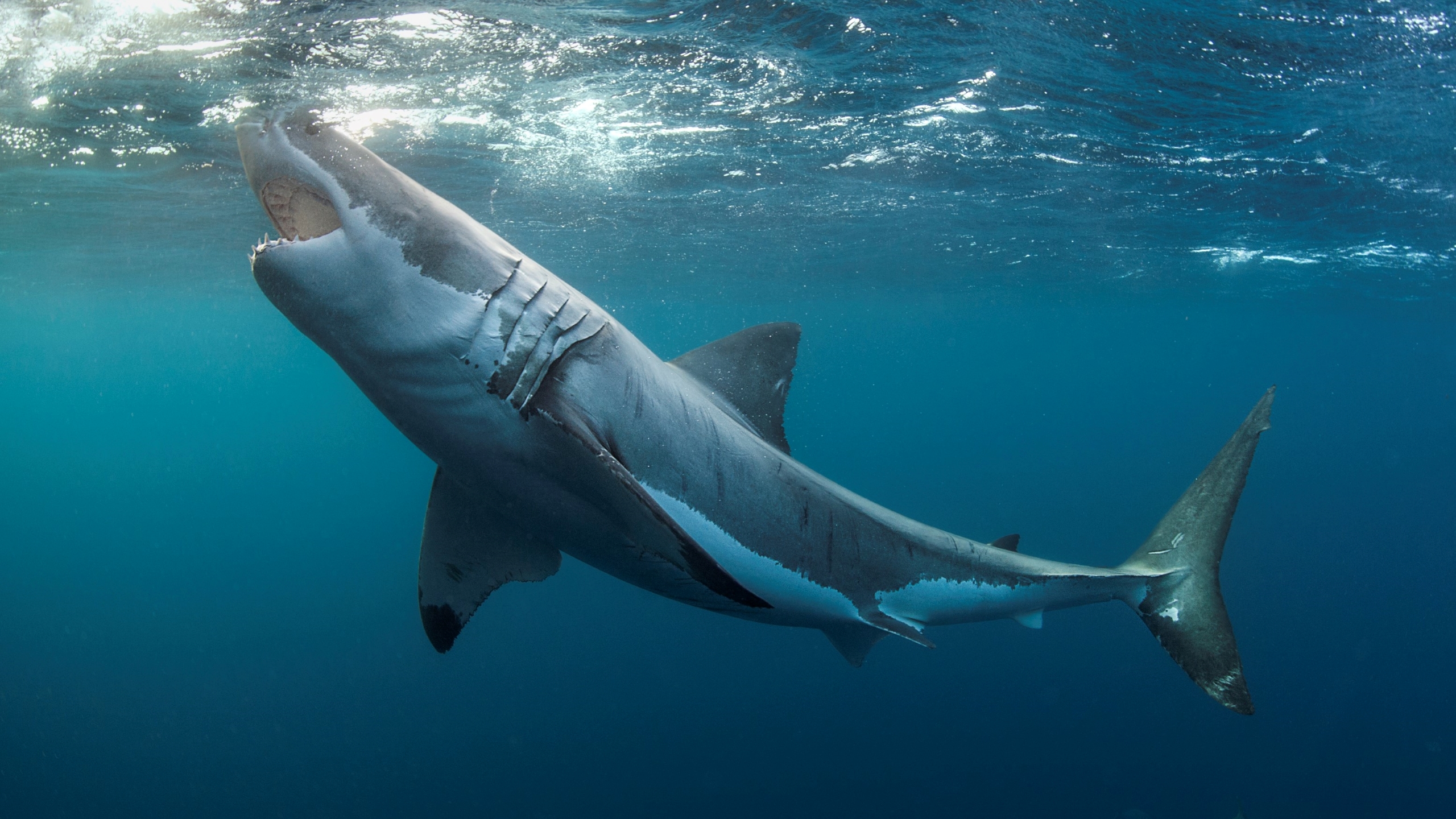Great white sharks can't see a difference between humans and prey
Great white sharks' vision may lead to mistaken identity.

Great white sharks can't see the difference between their typical prey and humans swimming or paddling on surfboards, suggesting some shark attacks are cases of mistaken identity, according to a new study.
Researchers filmed seals and humans in water and edited the footage so that it matched the vision of juvenile great white sharks, or white sharks, which pose the greatest risk to human surfers. The researchers found that the shape and motion of humans look the same as seals from a shark's perspective.
The study, published Tuesday (Oct. 26) in the Journal of the Royal Society Interface, is the first to test the theory that sharks attack humans because they mistake people for prey.
"White sharks are often portrayed as ‘mindless killers’ and ‘fond of human flesh,’ however, this does not seem to be the case, we just look like their food," study lead author Laura Ryan, a neurobiologist and post doctoral researcher at Macquarie University in Australia, told Live Science in an email.
Related: Aahhhhh! 5 scary shark myths busted
Great white sharks (Carcharodon carcharias) are responsible for more human deaths than any other shark species and killed six people in 2020, although the relative risk of humans being bitten by sharks is still extremely low, according to the University of Florida’s International Shark Attack File.
These sharks start hunting seals when they are about 8.2 feet (2.5 meters) long. They develop a search image for their prey and combine that with other sensory information, such as smell, to know what to eat. According to Ryan, it’s a learning process that could be prone to mistakes.
Get the world’s most fascinating discoveries delivered straight to your inbox.
Great white sharks lack color vision and cannot see fine details like the human eye can. The researchers processed the videos they filmed to reflect how a shark's retina detects the motion and shapes of seals, and compared that motion to humans swimming and paddling on surfboards. This included a longboard surfboard; 9.3 feet by 1.9 feet (2.83 m by 0.58 m), and a shortboard surfboard; 5.8 feet by 1.6 feet (1.77 m by 0.5 m). They concluded that none of the scenarios were visually distinct for a juvenile great white shark swimming below.
"I knew there would be some similarities but maybe not to the extent we found," Ryan said. "Specifically, I thought swimmers might not be as similar as a surfer to a seal as they typically aren’t involved in as many shark bites. However, the swimmers were also difficult to tell apart from a seal."
The longboard surfboard was less similar to seals, indicating there are some small differences in the way a great white shark might perceive the shape of longboard surfboards compared to shortboard surfboards and swimmers. However, the researchers don't know how that is reflected in shark behavior because sharks bite humans on longboards too, Ryan said.
The new research only applies to great white sharks, and there are other sharks, such as bull sharks and tiger sharks, that also occasionally bite humans. Furthermore, mature great white sharks also sometimes bite humans and when they are older, more experienced hunters, they may make fewer mistakes, according to Ryan. In other words, not all bites are necessarily due to mistaken identity.
Great white sharks are vulnerable to extinction, and humans deliberately kill them as part of beach protection programs in Australia and South Africa, although the sharks are sometimes captured and released alive, according to the International Union for Conservation of Nature (IUCN).
Not knowing exactly why sharks attack humans creates public concern and leads to humans introducing measures to reduce shark populations, which also has harmful effects on other marine life, according to Ryan. Sharks play important roles in ocean ecosystems and by hunting other animals, they ensure prey populations remain healthy and at a size their habitat’s resources can support, Live Science previously reported. Ryan hopes that a greater understanding of why sharks bite humans will lead to improved solutions for preventing shark attacks without harming marine life.
Originally published on Live Science.

Patrick Pester is the trending news writer at Live Science. His work has appeared on other science websites, such as BBC Science Focus and Scientific American. Patrick retrained as a journalist after spending his early career working in zoos and wildlife conservation. He was awarded the Master's Excellence Scholarship to study at Cardiff University where he completed a master's degree in international journalism. He also has a second master's degree in biodiversity, evolution and conservation in action from Middlesex University London. When he isn't writing news, Patrick investigates the sale of human remains.


